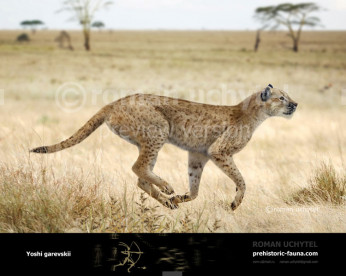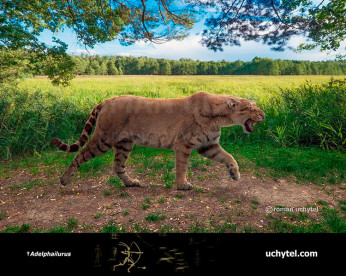Dinofelis
127127Dinofelis piveteaui (Dinofelis piveteaui Ewer, 1955)
? Therailurus Piveteau
Order: Carnivora
Family: Felidae
Dimensions: length - 1,5 m, height - 80 cm, weight - 90 kg
Temporal range: during the early Pliocene to early Pleistocene (Africa)
A typical representative: Stegotetrabelodon syrticus, Petrocchi, 1954
Dinofelis fossils and bones have been found in South Africa along with those of the baboons that it possibly killed. Bones from several specimens of Dinofelis and baboons were found in a natural trap. Dinofelis may have entered the place to feed on trapped animals or may have simply wandered into a location and was not able to escape again. Several fossils sites from South Africa seem to show that Dinofelis may have hunted and killed Australopithecus africanus since they harbored fossilized remains of Dinofelis, hominids, and other large contemporary animals of the period. Also, since Dinofelis remains have been found near Paranthropus fossil skulls in South Africa, a few of which have peculiar twin holes in their crania matching the Dinofelis upper canines's spacing almost exactly, it is possible that Dinofelis was preying on robust hominids as well. It is thought that the gradual disappearance of the forests in which Dinofelis hunted may have contributed to its extinction at the start of the ice age.
In size they were between a modern leopard and jaguar (70 cm tall and up to 120 kg), medium-sized but powerful cats that possessed two prominent sabre teeth. The front limbs were particularly robust compared to the modern cats (even the jaguar). This stout body may implicate a preference for dense or mixed habitats although it may also have been similar to the extant jaguar with its range from forest to open range including wetland.
Dinofelis barlowi (Dinofelis barlowi Broom, 1937)
? Therailurus Piveteau
Order: Carnivora
Family: Felidae
Dimensions: length - 1,7 m, height - 60 - 85 cm, weight - 120-150 kg
Temporal range: during the Middle Pliocene - Early Pelistocene epoch (Africa, Europe, North America and Asia)
Dinofelis werdelini (†Dinofelis werdelini (Jiangzuo et al., 2023))
Temporal range: during the Pliocene (Africa)
Dinofelis werdelini have been similar in size to a large jaguar and lived 5.2 million years ago during the early Pliocene period. Compared to other members of its genus, Dinofelis werdelini had bigger canine teeth, just under 10 centimetres, but smaller teeth on the sides of its mouth. The species’ leopard-like skull shape suggests it was well-adapted to ambushing prey and probably hunted in a forest landscape.
Dinofelis piveteaui (Dinofelis piveteaui Ewer, 1955)
? Therailurus Piveteau
Order: Carnivora
Family: Felidae
Dimensions: length - 1,5 m, height - 80 cm, weight - 90 kg
Temporal range: during the early Pliocene to early Pleistocene (Africa)
A typical representative: Stegotetrabelodon syrticus, Petrocchi, 1954
Dinofelis fossils and bones have been found in South Africa along with those of the baboons that it possibly killed. Bones from several specimens of Dinofelis and baboons were found in a natural trap. Dinofelis may have entered the place to feed on trapped animals or may have simply wandered into a location and was not able to escape again. Several fossils sites from South Africa seem to show that Dinofelis may have hunted and killed Australopithecus africanus since they harbored fossilized remains of Dinofelis, hominids, and other large contemporary animals of the period. Also, since Dinofelis remains have been found near Paranthropus fossil skulls in South Africa, a few of which have peculiar twin holes in their crania matching the Dinofelis upper canines's spacing almost exactly, it is possible that Dinofelis was preying on robust hominids as well. It is thought that the gradual disappearance of the forests in which Dinofelis hunted may have contributed to its extinction at the start of the ice age.
In size they were between a modern leopard and jaguar (70 cm tall and up to 120 kg), medium-sized but powerful cats that possessed two prominent sabre teeth. The front limbs were particularly robust compared to the modern cats (even the jaguar). This stout body may implicate a preference for dense or mixed habitats although it may also have been similar to the extant jaguar with its range from forest to open range including wetland.
Dinofelis barlowi (Dinofelis barlowi Broom, 1937)
? Therailurus Piveteau
Order: Carnivora
Family: Felidae
Dimensions: length - 1,7 m, height - 60 - 85 cm, weight - 120-150 kg
Temporal range: during the Middle Pliocene - Early Pelistocene epoch (Africa, Europe, North America and Asia)
Dinofelis werdelini (†Dinofelis werdelini (Jiangzuo et al., 2023))
Temporal range: during the Pliocene (Africa)
Dinofelis werdelini have been similar in size to a large jaguar and lived 5.2 million years ago during the early Pliocene period. Compared to other members of its genus, Dinofelis werdelini had bigger canine teeth, just under 10 centimetres, but smaller teeth on the sides of its mouth. The species’ leopard-like skull shape suggests it was well-adapted to ambushing prey and probably hunted in a forest landscape.

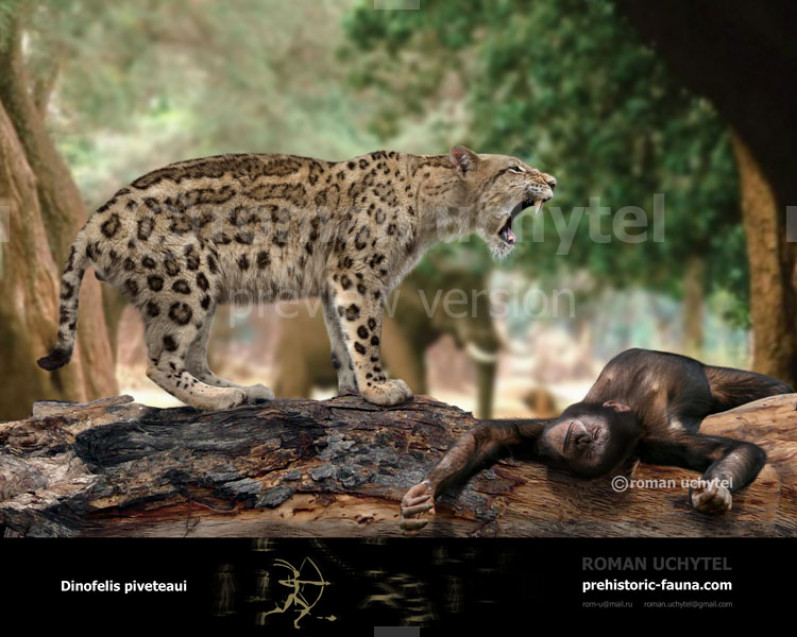
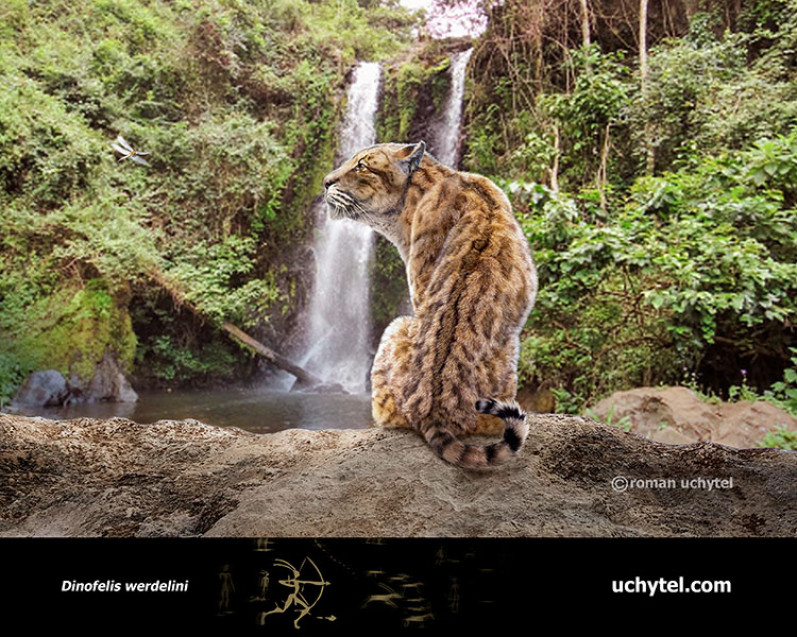
-797x638.jpg)
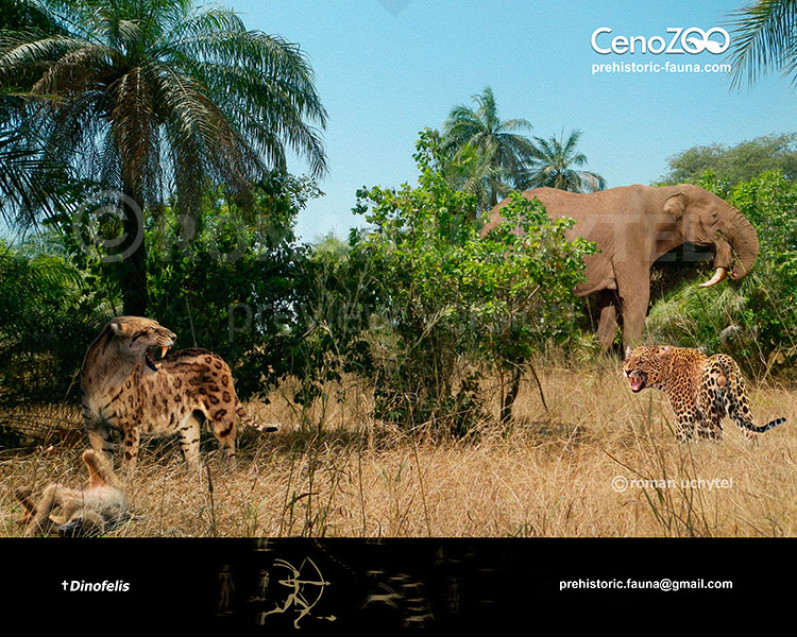
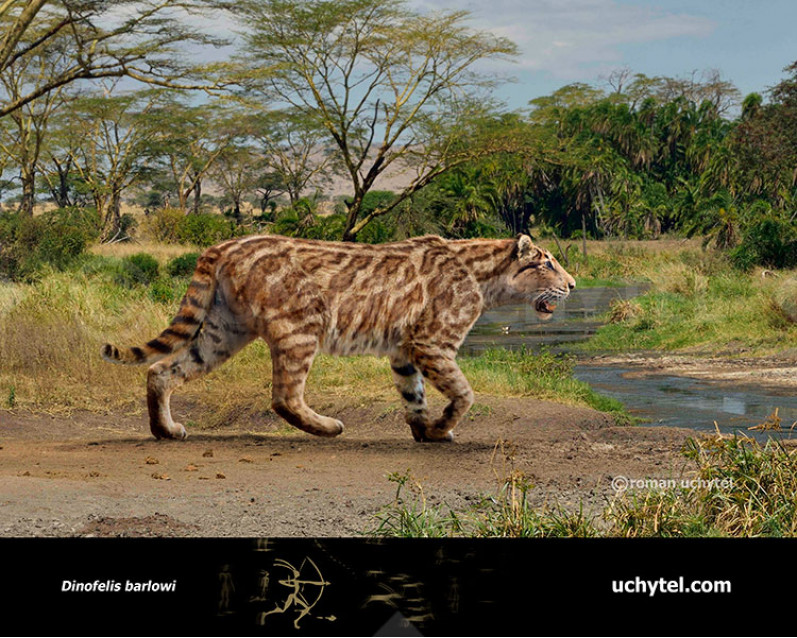
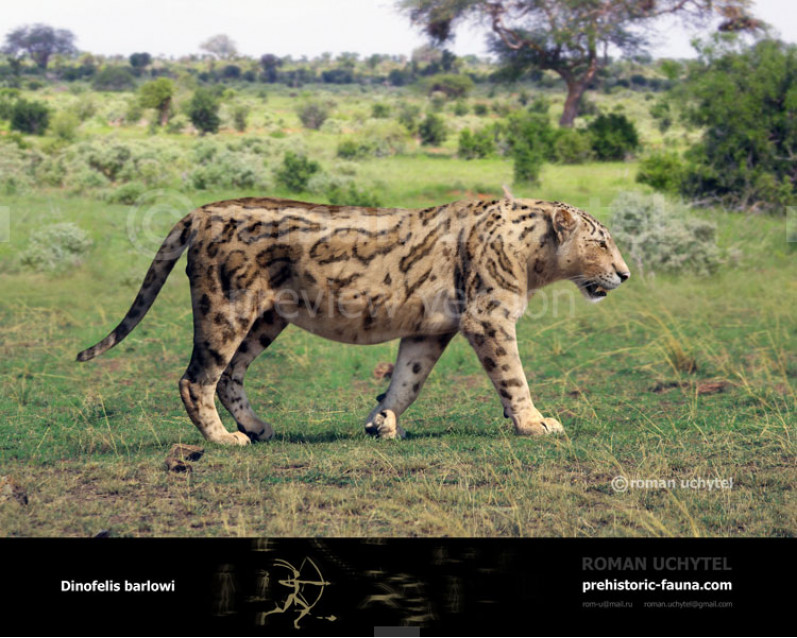
-797x638.jpg)
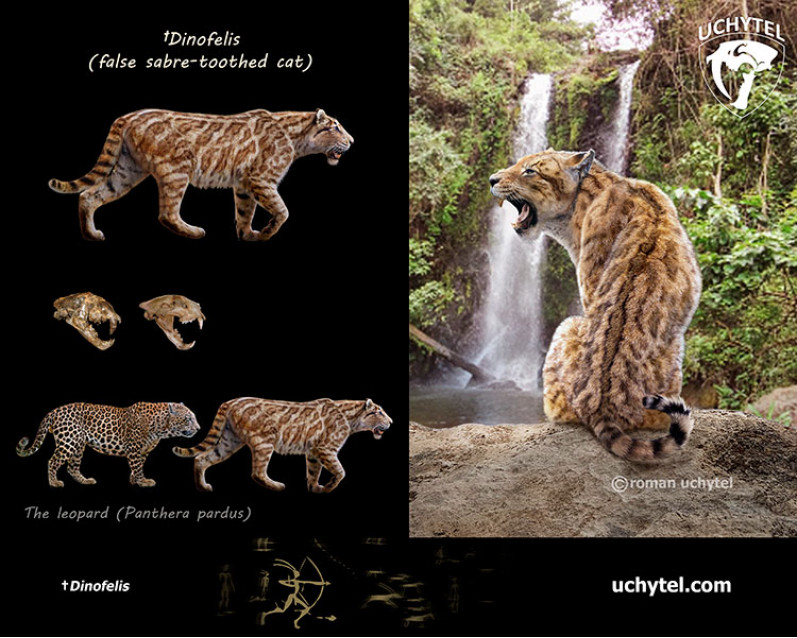


-70x56.jpg)



-70x56.jpg)

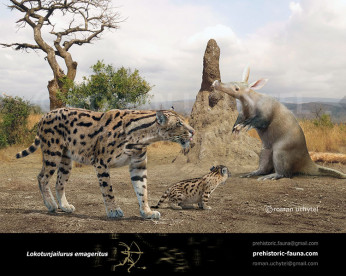
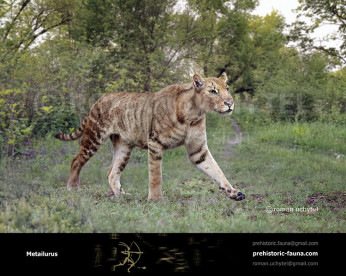
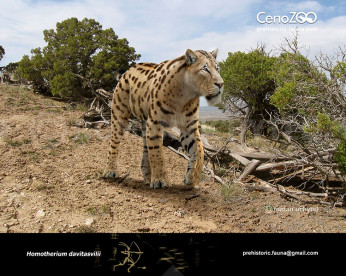
-346x277.jpg)
